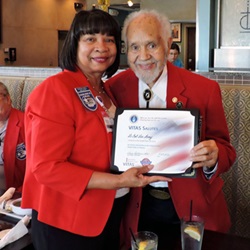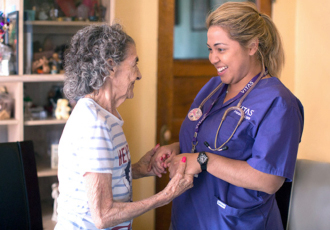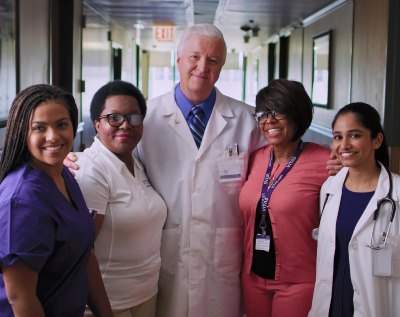A VITAS Admission Liaison – Building Relationships, Gaining Trust
The ideal VITAS admission liaison is someone who is a skilled and empathetic communicator, a passionate educator, and a trusted relationship builder who can share information with targeted populations and communities about how VITAS can help, the hospice philosophy and end-of-life care.
Along with sales skills, the admission liaison leverages education, networking and outreach to create new referrals for VITAS services.
Serving diverse communities
At VITAS, we created the admission liaison position because we understand that culture, religious beliefs, life experiences, authority figures, peers and community can profoundly impact how people and their families address healthcare, death, dying and end-of-life care. Target audiences for VITAS admission liaisons include:
- Active seniors
- African American, Hispanic, Haitian, Asian and other populations
- The Jewish community
- Military veterans
- The LGBTQ community
- Congregations and other faith communities
Within their respective VITAS regions, liaisons understand the belief systems, behaviors and concerns of patients and families of the target audiences. They address the realities, myths and misconceptions that surround hospice services, death and end-of-life care.
Through outreach, relationship-building and education, they encourage patients, families and the community to seek help and listen to advice from trusted and knowledgeable community resources, healthcare professionals and religious leaders who have been educated about the issues surrounding terminal illness, death and dying.
The liaison position is well-suited for individuals who belong to the target audiences, share similar experiences or have a passion for the VITAS vision. An admission liaison in a large metropolitan area might focus their energy on a single audience, whereas liaisons in less populated areas might assume broader responsibilities that touch on a number of targeted populations and groups.
A day in the life of the admission liaison
Because no two communities are alike, there is no “typical day” for an admission liaison. Indeed, every day is a chance to spread the word about VITAS services and solutions.
A liaison might visit senior centers, churches, classrooms, community centers, social service agencies, assisted living communities or Veterans Administration (VA) hospitals. A liaison might attend health fairs, community events, community forums, military events, religious services or support groups.
Liaisons educate their communities about the broad range of VITAS services and solutions, which include hospice services brought to the home, round-the-clock nursing when medically necessary, and an interdisciplinary team approach that provides medical, spiritual and psychosocial care for patients near the end of life and for their families.
Acknowledging the unique needs of specific populations and communities
Each liaison approaches their position—and their target audience—with a goal of reducing barriers to hospice care and providing reassurance, resources and referrals at a critical point in the lives of terminally ill patients, their family caregivers and loved ones.
terminally ill patients, their family caregivers and loved ones.
Admission liaisons also understand that conversations about pain management, palliative care, hospice services and end-of-life issues are often intimate, unknown or complex. They help people understand hospice in a way that honors the traditions, cultures, beliefs and networks of influence within the target audiences. They address the varied beliefs and end-of-life ethics of faith communities, the respective customs and traditions of ethnic populations, and the unique medical issues and mental health challenges faced by veterans, seniors or LGBTQ individuals.
Through education and trust, they increase the likelihood that a reassuring “I know someone who can help you” recommendation from an influential leader or trusted peer will open doors that lead individuals and families to VITAS services.
The VITAS standards of care ensure that “terminally ill patients and their loved ones have ready access to compassionate and effective end-of-life care, no matter their race, nationality, religion, gender identify, gender expression or sexual orientation.

Choose a Career with VITAS
We offer a variety of full-time, part-time and per-diem employment opportunities. Employees earn competitive salaries and have the flexibility to choose a benefits package suitable to their own needs and lifestyle.
See Current Opportunities
